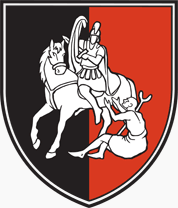Address: Tomazinova ul. 2
Post: 1275 Šmartno pri Litiji
Telephone: (+386) 01/8962-770
E-mail: info@smartno-litija.si
Contact form: click here
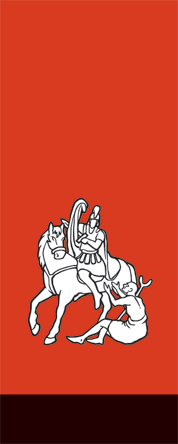 URL: www.smartno-litija.si
URL: www.smartno-litija.si
Mayor: Blaž Izlakar
Mayor’s e-mail: blaz.izlakar@smartno-litija.si
VAT ID: 99744686
ID number: 1779737
Registration number: 552905278
Activity code: 75.110
TSA sub-account: 01394-0100000193
OFFICIAL HOURS:
• Monday
08.00 – 12.00 in 13.00 – 15.00
• Wednesday
08.00 – 12.00 in 13.00 – 17.00
• Friday
08.00 – 13.00
MAYOR’S OFFICIAL HOURS:
On arrangement. Prior notice required
on telephone number (+386) 01/8962-770.
Presentation
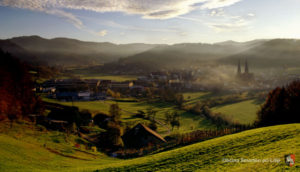 Šmartno pri Litiji is situated in the western Posavje Hills, 252 m above sea level. A single glance at the map reveals this town is a crossroads; the roads lead in the directions Litija – Ljubljana or Litija – Zagorje, then into the Kostrevnica Valley, towards Moravče, past Bogenšperk and through Temenica to the road Ljubljana – Zagreb, and through the Zavrstnik Valley and Trebeljevo towards Ljubljana.
Šmartno pri Litiji is situated in the western Posavje Hills, 252 m above sea level. A single glance at the map reveals this town is a crossroads; the roads lead in the directions Litija – Ljubljana or Litija – Zagorje, then into the Kostrevnica Valley, towards Moravče, past Bogenšperk and through Temenica to the road Ljubljana – Zagreb, and through the Zavrstnik Valley and Trebeljevo towards Ljubljana.
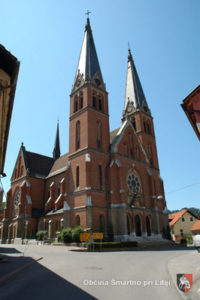 Šmartno pri Litiji is a clustered town situated 3 km southeast of Litija. The area has a very diverse geological composition; the oldest rocks date back to the Carboniferous and Permian periods (slate, quartz sandstone and conglomerate), Holocene alluvia have been found by the streams, dolomite and other rocks are present in this area, and in the direction of Zavrstnik numerous plant fossils have been discovered in the sandstone.
Šmartno pri Litiji is a clustered town situated 3 km southeast of Litija. The area has a very diverse geological composition; the oldest rocks date back to the Carboniferous and Permian periods (slate, quartz sandstone and conglomerate), Holocene alluvia have been found by the streams, dolomite and other rocks are present in this area, and in the direction of Zavrstnik numerous plant fossils have been discovered in the sandstone.
 The Šmartno basin is surrounded by hills in a rectangular shape; it is bound to the northwest by the Sitarjevec Hill, to the east by the Ojstrman Hill, to the southeast by the Kuhelj Hill, the Veliki Oblak, Mali Oblak and Cvingar Hills, and to the west by the Tičnica and Strmenca Hills. Through the town runs the Reka Stream, which springs in Reka-Gozd and is fed by two tributaries, the Črni potok and Kostrevniški potok Streams. The Reka Stream issues into the Sava River at the village Breg. The old Šmartno town centre grew around the town square next to the parish church, while the new, residential part of the town extends to the north as far as Ustje and Jeze, as well as to the south. The village Ustje was joined to Šmartno in 1989. The town has also spread over two other villages, namely Roje and Slatna. Šmartno is an important crossroads where the roads meet that lead towards Litija, towards the Zasavje Region, through the Jablanica Valley to Moravče and the Mirna Valley, through Bogenšperk into the Temenica Valley and through Zavrstnik towards Ljubljana.
The Šmartno basin is surrounded by hills in a rectangular shape; it is bound to the northwest by the Sitarjevec Hill, to the east by the Ojstrman Hill, to the southeast by the Kuhelj Hill, the Veliki Oblak, Mali Oblak and Cvingar Hills, and to the west by the Tičnica and Strmenca Hills. Through the town runs the Reka Stream, which springs in Reka-Gozd and is fed by two tributaries, the Črni potok and Kostrevniški potok Streams. The Reka Stream issues into the Sava River at the village Breg. The old Šmartno town centre grew around the town square next to the parish church, while the new, residential part of the town extends to the north as far as Ustje and Jeze, as well as to the south. The village Ustje was joined to Šmartno in 1989. The town has also spread over two other villages, namely Roje and Slatna. Šmartno is an important crossroads where the roads meet that lead towards Litija, towards the Zasavje Region, through the Jablanica Valley to Moravče and the Mirna Valley, through Bogenšperk into the Temenica Valley and through Zavrstnik towards Ljubljana.
Important telephone numbers:
PI Bogenšperk – Bogenšperk Castle
(+386) 01/8987-867
(+386) 01/8987-664
Šmartno pri Litiji Parish Office
(+386) 01/8987-391
Šmartno Primary School
(+386) 01/8900-160
Litija Administrative Unit
(+386) 01/8962-345
Šmartno Local Office
(+386) 01/8962-390
Health Care Centre
(+386) 01/8900-400
Litija Library
(+386) 01/8980-580
Spacial photos
Bogenšperk Castle
(spacial paintings from the year 2008)
Requires Flash plugin
History of Šmartno pri Litiji Municipality
Archaeological finds prove that the Šmartno area was inhabited as early as the prehistoric ages. Prehistoric settlements have been found on the Tičnica Hill above Šmartno, in Slatna, on the Cvinger Hill near Jeze, in Gradišče above Jablanica, Oblak near Bogenšperk, Podroje, Brezje, Dvor near Javor, Velika Kostrevnica, Šumprek and Gradišče near Vintarjevec.
Both the Kostrevnica Valley and the Črni Potok Valley connected the Zasavje and Dolenjska Regions. An important road lead from the Vače of the Iron Age across the areas nowadays referred to as the Litija and Šmartno areas, into the Črni Potok Valley, to the Debeče saddle, and from there towards the major centres at Stična, on the Magdalenska gora Hill, and at Novo mesto, and into the Krka Valley. Some of the most interesting finds, which testify to the Illyrian culture of the Iron Age as well as the importance of metal craft, originate from Velika Kostrevnica (barrows with earthen and bronze burial objects) and Vintarjevec.
In 1931, the locals dug up an Iron Age barrow containing a male skeleton and exquisite burial objects (iron spearhead, iron lance point, iron socketed axe, bronze fibulas, bracelets, earring, anklets, belt buckles, etc.). Small barrows were also found around the Vintarjevec church, which site had probably been the burial grounds of the indigenous inhabitants from the Gradišče settlement. Research reveals that the well fortified settlement may have lasted almost 700 years, reaching its peak in the late Iron Age. Eight ruined houses were found with valuable artefacts, one of them being an inscribed stone of Venetian origin. It is not certain why the settlement was ruined in the 2nd century AD. The finds in one of the houses indicate that the inhabitants left it in a hurry, perhaps due to the Marcomanni invasion; however, there is no firm evidence to support this claim.
The data on the life in this area during the classical antiquity, the Migration Period, the Middle Ages and later periods are scarce. What is known is that the Romans already exploited the mine on the Sitarjevec Hill. The mines in the Cvinger Hill area near Jeze were intensely exploited in the Middle Ages. Traces of an old smelter and tunnels have been discovered south of the Slatna Castle, while tunnels can also be found in the area of the Velika dolina, Šimenček, Slatna and Ojsterman Valleys. Šmartno was presumably connected to the Maljek mine by means of a four-kilometre tunnel, completed in 1648, which came to the surface at the chapel. The inscription on Christof Brukherschmid’s tombstone erected in 1537 at the Šmartno church testifies to the importance of mining in the Šmartno area, as it says, “God bless the noble miners”. In the 16th century, the mining and smelting industry reached its first peak. At the time, lead ore was only extracted in the Litija area, whence it was exported at first to Hungary and later mostly to Italy.
 Ever since the ancient times, Šmartno has been a strong administrative, parish and school centre with a well developed craft industry. The Šmartno tax municipality area bordered the Stična and Višnja Gora Districts. It was within a ten mile distance from the county centre Novo mesto. The municipality comprised the clustered villages Šmartno and Ustje, the Grmače estate and Slatna Castle. The parish and school were under the Stična district imperial authority patronage. According to the 1830 population census, Šmartno was at the time inhabited by 309 men and 332 women, who resided in 108 houses and 146 apartments. In addition, 69 men and 82 women lived in Ustje, in 20 houses and 31 families. The total number of inhabitants thus amounted to 792. 129 of these were farmers, 44 were engaged in craft industry and farming, 2 of them were priests and one was a teacher. Among the craftsmen, there were 3 tanners, 5 blacksmiths, 2 shoemakers, 2 millers, 1 mason, 1 joiner, 4 petty tradesmen, 2 butchers, 2 river boat owners, 1 painter, 1 saddler, 1 locksmith and 19 innkeepers. The inhabitants mainly ate vegetables (cabbages, potatoes, turnips, beans), millet and buckwheat groats, as well as buckwheat, barley and corn bread. Meat was only put on the table on holidays and special occasions. Altogether, people bred 20 horses, 60 oxen, 120 cows, 60 calves and 140 pigs. Horses and pigs were mainly bought in Styria and Croatia. Cattle were mainly bred at home; during the summers they were herded in the pastures and woods, and after the harvest in the meadows and fields. The land was divided into the demesne (manorial) land and rural (subjects’) land. There were 7 full farmers (9-12 acres of arable land), 5 three-quarter farmers (7-8 acres), 13 half farmers (4-6 acres), 32 quarter farmers (2-4 acres) and 57 cottagers (half to one acre of arable land). The subjects were subordinate to the following landlords: the Stična state lords, the Slatna lords, the Bogenšperk and Grmače mansions, the Štanga and Grbin estates, the Šmartno presbytery and the benefice on the hill. Wheat tithes were levied by the Stična state lords. The hunting rights were claimed by the Slatna lords, as well as the Črni Potok and Grmače estates. The Slatna Castle, the Grmače estate, the presbytery and several craftsmen’s houses were storey houses, stone built and shingled. The rest of the houses outside Šmartno were mostly wooden houses, straw covered and without chimneys.
Ever since the ancient times, Šmartno has been a strong administrative, parish and school centre with a well developed craft industry. The Šmartno tax municipality area bordered the Stična and Višnja Gora Districts. It was within a ten mile distance from the county centre Novo mesto. The municipality comprised the clustered villages Šmartno and Ustje, the Grmače estate and Slatna Castle. The parish and school were under the Stična district imperial authority patronage. According to the 1830 population census, Šmartno was at the time inhabited by 309 men and 332 women, who resided in 108 houses and 146 apartments. In addition, 69 men and 82 women lived in Ustje, in 20 houses and 31 families. The total number of inhabitants thus amounted to 792. 129 of these were farmers, 44 were engaged in craft industry and farming, 2 of them were priests and one was a teacher. Among the craftsmen, there were 3 tanners, 5 blacksmiths, 2 shoemakers, 2 millers, 1 mason, 1 joiner, 4 petty tradesmen, 2 butchers, 2 river boat owners, 1 painter, 1 saddler, 1 locksmith and 19 innkeepers. The inhabitants mainly ate vegetables (cabbages, potatoes, turnips, beans), millet and buckwheat groats, as well as buckwheat, barley and corn bread. Meat was only put on the table on holidays and special occasions. Altogether, people bred 20 horses, 60 oxen, 120 cows, 60 calves and 140 pigs. Horses and pigs were mainly bought in Styria and Croatia. Cattle were mainly bred at home; during the summers they were herded in the pastures and woods, and after the harvest in the meadows and fields. The land was divided into the demesne (manorial) land and rural (subjects’) land. There were 7 full farmers (9-12 acres of arable land), 5 three-quarter farmers (7-8 acres), 13 half farmers (4-6 acres), 32 quarter farmers (2-4 acres) and 57 cottagers (half to one acre of arable land). The subjects were subordinate to the following landlords: the Stična state lords, the Slatna lords, the Bogenšperk and Grmače mansions, the Štanga and Grbin estates, the Šmartno presbytery and the benefice on the hill. Wheat tithes were levied by the Stična state lords. The hunting rights were claimed by the Slatna lords, as well as the Črni Potok and Grmače estates. The Slatna Castle, the Grmače estate, the presbytery and several craftsmen’s houses were storey houses, stone built and shingled. The rest of the houses outside Šmartno were mostly wooden houses, straw covered and without chimneys.
The oldest house in Šmartno, built on a hill in 1580, used to be the property of the Lichtenchalter benefice. In the second half of the 17th century, it housed the Mollerey printmaking and painting workshop.
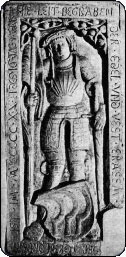 The old Šmartno town centre grew around the central square and the neogothic Church of St. Martin, which was designed by Adolf Wagner and constructed between 1899 and 1901. The building boasts a gothic baroquely ribbed vault and two baroque chapels. The main altar and pulpit were crafted in 1901 by the stonecutter Feliks Toman, while the side altars were built a year later. Between 1911 and 1913 the church was painted by Anton Jebačin (vaults, Stations of the Cross and transepts). The side chapel has inbuilt tombstones with inscriptions and relief images in memory of noble Erazem Wagensperg (from 1533), Jurij Smuk, a vicar of Šmartno (from 1533), Krištof Brukerschmied, the mine and smelter owner (from 1533) and noble Erazem Lichtenberg (from 1566). In the Šmartno surroundings, ore was extracted as early as the prehistoric ages. In the 15th century, lead mines were situated under the Slatna Castle, near the villages Tepe and Fužine, in Zagorica and in Sitarjevec. The Sitarjevec mine continued operation until 1951.
The old Šmartno town centre grew around the central square and the neogothic Church of St. Martin, which was designed by Adolf Wagner and constructed between 1899 and 1901. The building boasts a gothic baroquely ribbed vault and two baroque chapels. The main altar and pulpit were crafted in 1901 by the stonecutter Feliks Toman, while the side altars were built a year later. Between 1911 and 1913 the church was painted by Anton Jebačin (vaults, Stations of the Cross and transepts). The side chapel has inbuilt tombstones with inscriptions and relief images in memory of noble Erazem Wagensperg (from 1533), Jurij Smuk, a vicar of Šmartno (from 1533), Krištof Brukerschmied, the mine and smelter owner (from 1533) and noble Erazem Lichtenberg (from 1566). In the Šmartno surroundings, ore was extracted as early as the prehistoric ages. In the 15th century, lead mines were situated under the Slatna Castle, near the villages Tepe and Fužine, in Zagorica and in Sitarjevec. The Sitarjevec mine continued operation until 1951.
In the past, iron industry was one of the most developed industries in this region. There were foundries along the Germanšček stream with four forges and water powered hammers. The main products were ploughs, ploughshares, axes and large farm tools, which were then sold around Carniola and Styria. Besides the iron industry, trading and various craft industries flourished as well; the most common were tannery, shoemaking and inn-keeping.
The origins of the settlement can be traced back into the early Iron Age. It extended from the eastern Roje slope to Kusovna, where the remains of prehistoric and early medieval vessels have been found. Šmartno first appeared in historic sources in 1135, when the first vicar of Šmartno was mentioned.
Šmartno pri Litiji Primary School
Osnovna šola Šmartno pri Litiji
Pungrt 9
1275 Šmartno pri Litiji
T: (+386) 01/8900-160
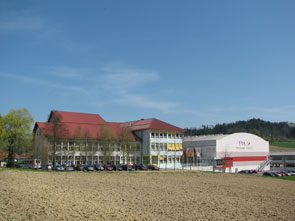 In Šmartno pri Litiji, primary school was set up as early as 1665; the students of the then single class school were taught in the presbytery. Afterwards, school was organized in private houses, and, according to oral tradition, in the Pungart chapel, where children were taught by the monks. It was evident from the book of commendations destroyed during World War II that the school developed into a two-class school in 1853, and four years later one more class was added. In 1868, the dean of Šmartno Jožef Burger established the first parish school. Children were taught on the first floor of what is nowadays the sexton’s house in the Stare Square. As the number of students increased, the school soon reached overcapacity, and in 1875 a new school building began to be constructed opposite the church. The inauguration of the new school, which was expanded into a four-class school (one of the few in the Carniola Region), took place on 4th November 1876.
In Šmartno pri Litiji, primary school was set up as early as 1665; the students of the then single class school were taught in the presbytery. Afterwards, school was organized in private houses, and, according to oral tradition, in the Pungart chapel, where children were taught by the monks. It was evident from the book of commendations destroyed during World War II that the school developed into a two-class school in 1853, and four years later one more class was added. In 1868, the dean of Šmartno Jožef Burger established the first parish school. Children were taught on the first floor of what is nowadays the sexton’s house in the Stare Square. As the number of students increased, the school soon reached overcapacity, and in 1875 a new school building began to be constructed opposite the church. The inauguration of the new school, which was expanded into a four-class school (one of the few in the Carniola Region), took place on 4th November 1876.
In 1926 the school already comprised six classes. Due to the strongly developed craft industry and farming in Šmartno and the surrounding area, a vocational continuation school was established in the school building in 1898, and from 1927 to 1931 a two-year farming continuation school was also organized. In 1941 the primary school consisted of seven classes. In the same year, the Germans replaced the Slovenian teachers with their own, and thoroughly examined the school and teachers’ libraries, which were in possession of around six hundred books. The school library was burned down, while the teachers’ library was moved to Kamnik and Kranj. Apart from the library, the Germans also destroyed the school archives.
After the war, a complete eight-year school was introduced. Due to the overcapacity of the existing school, the building of a new one was decided upon in 1958; the students first visited the new school in 1964. In the following years several extensions were added to the building. In 1991, the school got a new library and in 2003 an extension was built that enabled single shift and nine-year school. An important acquisition not only for the students but also for all the citizens is the swimming pool in the new part of the school.
The central school is attended by 497 students in 23 classes, while the three subsidiary schools (Velika Kostrevnica, Štangarske Poljane, Primskovo) are attended by a total of 80 students. Therefore, the entire school is visited by 577 students, who are taught by 45 teachers.
The school organizes various projects, workshops, exhibitions, and students work on research assignments. The students can choose among many extracurricular activities from the fields of science and mathematics, culture and sports. The school takes a particular interest in promoting sports, and wishes to provide the students with as varied sports education as possible. The Šmartno Primary School also boasts the organization of the now traditional Dnevnik’s School Team Cross-Country Run, which has attracted numerous participants from around Slovenia each year ever since 2000.
Link to the official website of Šmartno pri Litiji Primary School.
St. Martin Parish
Church of St. Martin
Šmartno pri Litiji Parish Office
T: (+386) 01/8987-391
 In the middle of the town square where the mighty neogothic church stands, once stood the old parish church dedicated to St. Martin. It was presumably built in the second half of the 15th century. Having become too small, it was pulled down in 1899, and a new church began to be built in its stead. The construction was supervised by Ivan Lavrenčič, the parish priest and dean in Šmartno. In just two years, on 15th September 1901, the new church was consecrated.
In the middle of the town square where the mighty neogothic church stands, once stood the old parish church dedicated to St. Martin. It was presumably built in the second half of the 15th century. Having become too small, it was pulled down in 1899, and a new church began to be built in its stead. The construction was supervised by Ivan Lavrenčič, the parish priest and dean in Šmartno. In just two years, on 15th September 1901, the new church was consecrated.
The veneration of St. Martin was spread in our country between the 7th and 10th centuries, and our oldest churches dedicated to this saint were built in that period. Šmartno was named after the church of St. Martin, which was built, as the legend goes, in the very place where a group of Šmartno miners who had been buried in the mine dug their way to the surface on 11th November, St. Martin’s name day. The first historical source that mentions a place with that name, though unverified, is a church document from 1135, when the patriarch of Aquileia supposedly appointed one of his vicars to Šmartno. The church land south of the Drava River had been the property of the patriarch of Aquileia until 811, and the pre-parishes had been its core. The land around the church with the christening and burial rights belonged to the pre-parishes, and not as yet to the already existent parish. The vicariates indicated the division of the pre-parishes into parishes due to the remoteness from the central church and increasing needs for religious service. The Šentvid pri Stični pre-parish (mentioned as plebs in 1136) comprised the vicariates St. Martin (Šmartno pri Litiji), St. Giles (Višnja gora), St. Cosmas and Damien (Krka) and St. Margaret (Prežganje). Along with the Šentvid pre-parish, these came under the Stična Monastery in 1389. The St. Martin vicariate comprised the following succursal churches: St. George in Blečji vrh, St. Mohor and Fortunat in Liberga, St. George below the Poganek Castle, St. Nicholas in the Litija square, St. Cross in Brezje, St. Mary Magdalene in Gradišče, St. Peter in Vintarjevec, St. Anna in Jablanica, St. Benedict in Kresnice, St. Catherine in Breg, St. Mary in Javorje. The vicars were required to attend the synods summoned by the abbot of Stična. At the synods they reported on their work in the parishes and the state of religious life as well as paid the taxes imposed on the parishes and succursal churches.
From 1901 to 2000, a total of 7628 christenings and 4095 burials took place, which means the number of christenings exceeded that of burials by 3533.
The church has always wished for everyone to be christened in the home parish. It is also the wish of the church that every engaged couple should be married in the home parish; in the parish of the bride, as has been customary for centuries.
The burial, too, should take place in the home parish, as the deceased thus remain close to the living to be remembered in memory and prayer.
It is our wish for the 21st century and the second century of our parish church that our parish should see many new births and christenings, that many weddings would take place, and that every deceased would have a church burial.
In 1940, the Šmartno parish had 2900 inhabitants. In 1971 the number increased to 3158, and by 2000 the number amounted to 2754. Thus, the parish increased in the last 60 years by 854 inhabitants.
List of Šmartno pri Litiji Municipality Settlements
55
Inhabitants:
5167
Municipality surface:
94,9 km2
| Settlement | No. of inhabitants |
| Bogenšperk Bukovica pri Litiji Cerovica Črni Potok Dolnji Vrh Dragovšek Dvor Gornji Vrh Gozd-Reka Gradišče pri Litiji Gradišče-K.o.Grad. in Polj. Gradiške Laze Jablaniške Laze Jablaniški Potok Jastrebnik Javorje Jelša Ježce Ježni Vrh Kamni Vrh pri Primskovem Koške Poljane Leskovica pri Šmartnem Liberga Lupinica Mala Kostrevnica Mala Štanga Mihelca Mišji Dol Mulhe Obla Gorica Podroje Poljane pri Primskovem Preska nad Kostrevnico Primskovo Račica Razbore-K.o.Ježni Vrh Razbore-K.o.Poljane-del Riharjevec Selšek Sevno Spodnja Jablanica Stara Gora pri Vel. Gabru Ščit Šmartno pri Litiji Štangarske Poljane Velika Kostrevnica Velika Štanga Vinji Vrh Vintarjevec Višnji Grm Volčja Jama Vrata Zagrič Zavrstnik Zgornja Jablanica |
— 32 140 329 25 48 96 8 140 89 73 146 63 5 32 62 92 28 21 7 7 64 57 116 212 21 22 26 11 19 120 19 91 27 49 26 — 59 73 48 57 9 15 1424 73 194 93 13 149 18 91 39 8 352 97 |
Local Communities in Šmartno pri Litiji Municipality
• LIBERGA LOCAL COMMUNITY, comprises the villages Liberga, Jelša and Preska nad Kostrevnico.
Coordinator: Vicenc Poglajen
Map
• KOSTREVNICA LOCAL COMMUNITY, comprises the villages Bogenšperk, Dvor, Lupinica, Velika Kostrevnica and Mala Kostrevnica from house number 15 onwards.
Coordinator: Mitja Jesenšek
Map
• VELIKA ŠTANGA LOCAL COMMUNITY, comprises the villages Koške Poljane, Račica, Mala Štanga and Velika Štanga.
Coordinator: Damjan Kastelic
Map
• ŠTANGARSKE POLJANE LOCAL COMMUNITY, comprises the villages Dragovšek, Gozd-Reka, Jastrebnik, Ščit, Štangarske Poljane and Volčja Jama.
Coordinator: Franc Černe
Map
• PRIMSKOVO LOCAL COMMUNITY, comprises the villages Primskovo, Dolnji Vrh, Gornji Vrh, Gradišče – c.m. Gradišče and Poljane, Ježce, Kamni vrh pri Primskovem, Mihelca, Mišji Dol, Poljane pri Primskovem, Razbore – c.m. Poljane del, Sevno, Stara Gora pri Velikem Gabru and Zagrič.
Coordinator: Janez Vidgaj
Map
• RAZBORE LOCAL COMMUNITY, comprises the villages Ježni Vrh, Mulhe, Razbore – c.m. Ježni Vrh, Vinji Vrh, Višnji Grm and Obla Gorica.
Coordinator: Rok Berdajs
Map
• JABLANIŠKA DOLINA LOCAL COMMUNITY, comprises the villages Bukovica pri Litiji, Cerovica, Gradišče pri Litiji, Jablaniške Laze, Jablaniški potok, Selšek, Spodnja Jablanica, Zgornja Jablanica and Gradiške Laze.
Coordinator: Nada Medvešek
Map
• JAVORJE LOCAL COMMUNITY, comprises the villages Javorje, Leskovica nad Šmartnem and Vrata.
Coordinator: Jože Dolšek
Map
Members of committe:
Rafael Pivec – president
Slava Murnc – secretary
Anton Berčon
Janez Trpin
Klemen Dragar
• VINTARJEVEC LOCAL COMMUNITY, comprises the villages Črni Potok, Podroje, Riharjevec and Vintarjevec.
Coordinator: Jože Šuštar
Map
• ZAVRSTNIK LOCAL COMMUNITY, comprises the village Zavrstnik.
Coordinator: Alojz Anžur
Map
COORDINATORS BETWEEN LOCAL COMMUNITIESS AND ŠMARTNO PRI LITIJI MUNICIPAL ADMINISTRATION
At its 10th regular meeting, the municipal council of the Šmartno pri Litiji Municipality passed the Ordinance on the Establishment and Competence of Local Community Boards in the Šmartno pri Litiji Municipality. The ordinance was published in the Official Gazette of the Republic of Slovenia No. 16/04 and became effective on the day following the publication, i.e. 21st February 2004. In compliance with the Ordinance, the mayor summoned citizens’ meetings in all local communities, and invited the citizens to submit their proposals of the local community board members. The citizens’ meetings took place from 3rd March 2004 to 27th March 2004. In compliance with Article 63 of the Statute of the Šmartno pri Litiji Municipality, the meetings summoned require the presence of at least one third of the voters from the respective local communities to render valid the decisions made. Unfortunately, the meetings summoned failed to constitute quorums, and therefore, the citizens present were informed by the mayor that a coordinator would be appointed for each local community until the local community board was established.
As agreed, the mayor appointed the following coordinators:
Javorje local community: Dolšek Jože
Liberga local community: Poglajen Andrej
Kostrevnica local community: Jesenšek Mitja
Vintarjevec local community: Pipan Vinko
Zarstnik local community: Anžur Alojz
Velika Štanga local community: Kastelic Damjan
Štangarske poljane local community: Černe Franc
Razbore local community: Zadražnik Martin
Primskovo local community: Zadražnik Jože
Jablaniška dolina local community: Pintar Branko
In accordance with the mayor’s resolution, the coordinators are appointed for a fixed period of time – until the local community board has been established – and represent a bond between the local communities and the Šmartno pri Litiji Municipality. Should the citizens have any problems, they can refer to them.
Societies in Šmartno pri Litiji Municipality
A
AVTOCROSS DRUŠTVO RACING TEAM MUSTANG LITIJA
Velika Štanga 7, 1275 Šmartno pri Litiji
C
CB RADIOKLUB VALVAZOR
Vrata, 1275 Šmartno pri Litiji
D
DRUŠTVO PRIJATELJEV MLADINE ŠMARTNO PRI LITIJI
Pungrt 9, 1275 Šmartno pri Litiji
DRUŠTVO PROSTI ČAS ŠMARTNO – website
Pungrt 9, 1275 Šmartno pri Litiji
DRUŠTVO SELA – DRUŠTVO ZA OHRANJANJE NARAVNE IN KULTURNE DEDIŠČINE TER ZDRAVEGA ŽIVLJENJA
Bartlova ulica 5, 1275 Šmartno pri Litiji
DRUŠTVO UPOKOJENCEV ŠMARTNO PRI LITIJI
Staretov trg 25, 1275 Šmartno pri Litiji
DRUŠTVO VALVASORJEVA KONJENICA – website
Dvor 9, 1275 Šmartno pri Litiji
DRUŠTVO ZA RAZVOJ IN VAROVANJE SITARJEVCA
Staretov trg 25, 1275 Šmartno pri Litiji
DRUŠTVO ZA RAZVOJ PODEŽELJA LAZ – website
Zgornja Jablanica 1, 1275 Šmartno pri Litiji
DRUŠTVO ZA ZAŠČITO PRAVIC OTROK IN MATER SAMOHRANILK OSTRŽEK
Gradišče 20, 1276 Primskovo
G
GASILSKA ZVEZA ŠMARTNO PRI LITIJI
Ustje 18, 1275 Šmartno pri Litiji
K
KLUB JADRALNIH PADALCEV GEOSS
Zavrstnik 10, 1275 Šmartno pri Litiji
KLUB MALEGA NOGOMETA PETEK ZVEČER
Ustje 35 A, 1275 Šmartno pri Litiji
KONJENIŠKI KLUB ANDREJEV RANČ
Dvor 6, 1275 Šmartno pri Litiji
KONJENIŠKO TREKING ZDRUŽENJE SLOVENIJE
Bogenšperk 5, 1275 Šmartno pri Litiji
KUD FOLKLORNA SKUPINA JAVORJE
Na Roje 1, 1275 Šmartno pri Litiji
KULTURNO DRUŠTVO JAVORJE
Javorje 4, 1275 Šmartno pri Litiji
KULTURNO IN ŠPORTNO DRUŠTVO PRINSKAU – website
Gradišče 28, Primskovo
KULTURNO PROSVETNO DRUŠTVO IVAN BARTL VELIKA KOSTREVNICA
Dvor 6, 1275 Šmartno pri Litiji
KULTURNO ŠPORTNO DRUŠTVO PRIMSKOVO
Gradišče 28, 1276 Primskovo
KULTURNO ŠPORTNO DRUŠTVO VELIKA ŠTANGA
Velika Štanga 6, 1275 Šmartno pri Litiji
KULTURNO UMETNIŠKO DRUŠTVO ŠMARTIN
Valvazorjeva 43, 1275 Šmartno pri Litiji
KULTURNO UMETNIŠKO DRUŠTVO VAJKARD
Staretov trg 25, 1275 Šmartno pri Litiji
L
LOVSKA DRUŽINA ŠMARTNO PRI LITIJI
Črni Potok 9a, 1275 Šmartno pri Litiji
M
MLADINSKI KLUB ŠTAB ŠMARTNO PRI LITIJI
Jeze 2a, 1275 Šmartno pri Litiji
MOTO KLUB “ZAI” GIC RACING TEAM
Usnjarska 10, 1275 Šmartno pri Litiji
P
PEVSKO DRUŠTVO ZVON
Za povrtmi 4, 1275 Šmartno pri Litiji
PGD JABLANICA
Jablanica 1, 1275 Šmartno pri Litiji
PGD JAVORJE
Javorje 10, 1275 Šmartno pri Litiji
PGD KOSTREVNICA
Velika Kostrevnica 38, 1275 Šmartno pri Litiji
PGD LIBERGA
Liberga 10 , 1275 Šmartno pri Litiji
PGD ZAVRSTNIK
Zavrstnik 26, 1275 Šmartno pri Litiji
POPOTNIŠKO DRUŠTVO LEVSTIKOVA POT – website
Sevno 44, 1276 Primskovo
PROSTOVOLJNO GASILSKO DRUŠTVO PRIMSKOVO – website
Gradišče 28, 1276 Primskovo
PROSTOVOLJNO GASILSKO DRUŠTVO ŠMARTNO PRI LITIJI
Ustje 18, 1275 Šmartno pri Litiji
PROSTOVOLJNO GASILSKO DRUŠTVO ŠTANGARSKE POLJANE
Štangarske Poljane 1a, 1275 Šmartno pri Litiji
PROSTOVOLJNO GASILSKO DRUŠTVO VINTARJEVEC
Vintarjevec 28, 1275 Šmartno pri Litiji
PROSVETNO DRUŠTVO ŠMARTNO PRI LITIJI
Usnjarska 6, 1275 Šmartno pri Litiji
R
ROKOMETNO DRUŠTVO ŠMARTNO 99 – website
Pungrt 7, 1275 Šmartno pri Litiji
S
STRELSKO DRUŠTVO ŠMARTNO – LITIJA
Pungrt 7, 1275 Šmartno pri Litiji
Š
ŠPORTNO DRUŠTVO DOLINA
Gradiške Laze 16, 1275 Šmartno pri Litiji
ŠPORTNO DRUŠTVO JAVOR
Javorje 23, 1275 Šmartno pri Litiji
ŠPORTNO DRUŠTVO JAVORJE
Javorje 4a, 1275 Šmartno pri Litiji
ŠPORTNO DRUŠTVO JAVORJE
Javorje 23, 1275 Šmartno pri Litiji
ŠPORTNO DRUŠTVO ŠMARTNO PRI LITIJI
Cerkovnik 32, 1275 Šmartno pri Litiji
ŠPORTNO DRUŠTVO VALVASOR
Jelša 18 , 1275 Šmartno pri Litiji
T
TAEKWONDO KLUB ŠMARTNO – LITIJA
Račica 3, 1275 Šmartno pri Litiji
TURISTIČNO DRUŠTVO ŠMARTNO
Staretov trg 25, 1275 Šmartno pri Litiji
TURISTIČNO RAZVOJNO DRUŠTVO KAMPELJC – website
Velika Štanga 17, 1275 Šmartno pri Litiji
V
VINOGRADNIŠKO DRUŠTVO ŠTUC ŠMARTNO
Staretov trg 25, 1275 Šmartno pri Litiji
Z
ZDRAVSTVENO IZOBRAŽEVALNO DRUŠTVO
Cerkovnik 9, 1275 Šmartno pri Litiji
ZVEZA KULTURNIH DRUŠTEV OBČINE ŠMARTNO PRI LITIJI
Staretov trg 25, 1275 Šmartno pri Litiji

